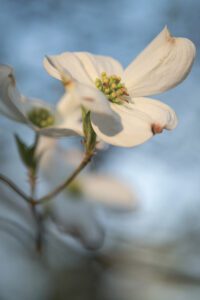24 Jun 2018 Tools of photography
Story and photos
by Linda Henderson
As far as I am concerned, 501 LIFE couldn’t have made a better choice for a theme for this month’s magazine — photography!
I have had a camera in my hands since I was 10 years old.

Dad bought the Brownie 127 as a birthday gift for my mom right before I was born. I was so happy when she allowed me to take it and use it to record a trip to Dogpatch. I have been hooked on photography since then and have owned more than 10 different cameras in my life since using that little Kodak Brownie. During my childhood and early teenage years, I had a couple of Kodak Instamatics. These were lots of fun for a teenager, and the spinning flash bulb caused burns more than once. When I was in high school I took photography and used a 35mm Minolta T202 film camera that we purchased from Sears.
After high school, photography had to take a back seat to education, career and then motherhood. As my son got older and was involved in USA competition swimming, I wanted to take pictures of his events, so I purchased a couple of Nikon F 35mm film cameras.
In 2005, my work life became very stressful. During that time, I had to deal with legal procedures, and I needed an outlet from the pressure of my job. Photography filled that need. I entered the digital world with the purchase of a Nikon D 80. The Nikon D 80 was a DSLR, or a digital single-lens reflex camera. The way a DSLR camera works is light travels through the lens, and then to a mirror that sends the image to the viewfinder and to the image sensor. I loved learning digital photography because when I placed my eye against the view finder to see the image in front of my camera, the tension of my work went away. Since that time, I have owned multiple Nikon cameras. As my digital camera skills have increased, I have upgraded my camera bodies and lenses.
Last year, I purchased a Fuji mirrorless camera system. Mirrorless cameras are the wave of the future. They are lighter and more compact. The camera body is thinner than the older DSLR camera because it doesn’t use a mechanical mirror to switch the scene between the viewfinder and the image sensor. Most mirrorless cameras have the ability to accept interchangeable lenses, so my mirrorless lens collection has grown as well. The difference between the DSLR and the mirrorless camera is with the DSLR the viewfinder shows you exactly what the camera’s image will capture. With a mirrorless camera, you get to preview the image on the camera’s back screen.
Which system is better? Mirrorless cameras are lighter, more compact, faster and easier to learn. But, there are fewer lenses and the technology is still developing. DSLR cameras are usually heavier and have many lenses to select from. The major camera manufacturers have more camera models for different levels of photography skill.
Rarely does a week go by that someone doesn’t ask me, “I want to buy a camera, which one should I buy?” My response is always the same. I ask them five questions. What is your budget? How much time do you have to devote to your new hobby? Will you want to upgrade later? What do you want to do with your photography? What are you going to do with your pictures?
Like all things in our lives, budget determines what we are able to start with. The bigger the budget, the more bells and whistles we are able to have. For most folks, I suggest that they purchase their first camera from a store that also offers lessons or classes on how to use and operate their new camera system. If that is not an option, then I suggest they go on the internet and find videos on possible camera choices. Watch the videos prior to buying a camera, to give you an idea on how easy or complicated a camera system is to use.
Photography is a skill that requires time to develop and understand. If you want to spend lots of time learning how to use your camera and develop your eye for photography, then you likely will want to start out with an entry-level DSLR or a mirrorless camera. I also suggest you start out with a system that your friends have. Learning from those around you is a big plus.

Beautiful dogwood bloom in the 501.
Are you willing to spend a little time in front of the computer? Most digital images require additional enhancing. There are multiple computer programs available for free or for a monthly subscription price. If you are not willing to spend a little time learning to process digital images, then you might consider a smartphone camera. The cost for a new smartphone with an excellent camera and an entry-level camera/lens are about the same. You still may need to “enrich” your photos with cropping, adding contrast or adding a little warmth to the image. Some of the newer smartphone cameras will permit you to manually adjust shutter speeds, set exposure levels and select filter styles.
Additional intermediate and advanced features are available such as optical image stabilization, which compensates for movement and allows for clear, in-focus and crisp photos. Many of these pocket-size smartphone cameras shoot 360-degree scenes in high resolution. If you plan to take lots of pictures, consider the size of your phone’s hard drive. The larger the storage the better! There are also photo apps, such as Google Photos, that have unlimited storage of your photos. Several of these apps will allow you to search photos by location, date and even the person that appears in the picture.
As your skills increase, you will eventually want to upgrade your camera. Point and shoot cameras and smartphone cameras have fixed lenses and cannot be upgraded. DSLRs and mirrorless will allow you to upgrade lenses and add filters. Always start small with a lens that is “fast” (more light sensitive). The lens should be a zoom lens of at least 18 mm to 55 mm. I always advise folks never upgrade until your camera and your lens are holding you back.
You might consider renting a lens and or a camera before you upgrade. There are several ways to rent the equipment that you are thinking of purchasing. A Little Rock camera store rents lenses and bodies as well as several big-named camera rental agencies. I rented a very expensive camera body for a photography trip that I took in March. Turns out my little mirrorless Fuji took better pictures, and renting the expensive camera was a waste of money. It also likely saved me from making a costly mistake if I had purchased the camera.
What do you want to photograph and what will you do with them? This is most important question to ask yourself because it is one of the biggest determining factors for choosing a certain type of camera. If you want to photograph wildlife, sports or portraits, I recommend you start with a DSLR or mirrorless. If you want to photograph flowers, close up, landscape, nature and travel photos, then consider mirrorless or point and shoot. If you only want to shoot what is happening in your life for Facebook or Instagram, then stick with the smartphone camera.
The bottom line is shoot what you have in your hands! Recently, I was standing on a beautiful bluff in a very remote area of Arkansas with five other expert and advanced skilled photographers. Between the five us, we have thousands of dollars of camera equipment and not one of us had our DSLR or mirrorless cameras with us. We all had an iPhone. So, we captured the beauty and the memories of the day with our smartphones. So, take lots of pictures, download them, print them, store them in safe places and share them with your friends and family.
Linda Henderson
Linda Henderson is a lifelong resident of the 501. During the week, Linda is a registered nurse at the Conway Human Development Center. On the weekends, she and her husband, Jim, travel the 501 and other areas of Arkansas. Jim drives and hauls equipment. Linda takes photographs of Arkansas. During their travels, they have gained appreciation and love for The Natural State. They have found the 501 has so much to offer for weekend fun and beauty to photograph.
- Landscapes of liberty - June 30, 2024
- Getting the shot of a lifetime - February 1, 2024
- The road to Gothic Mountain - October 9, 2023











